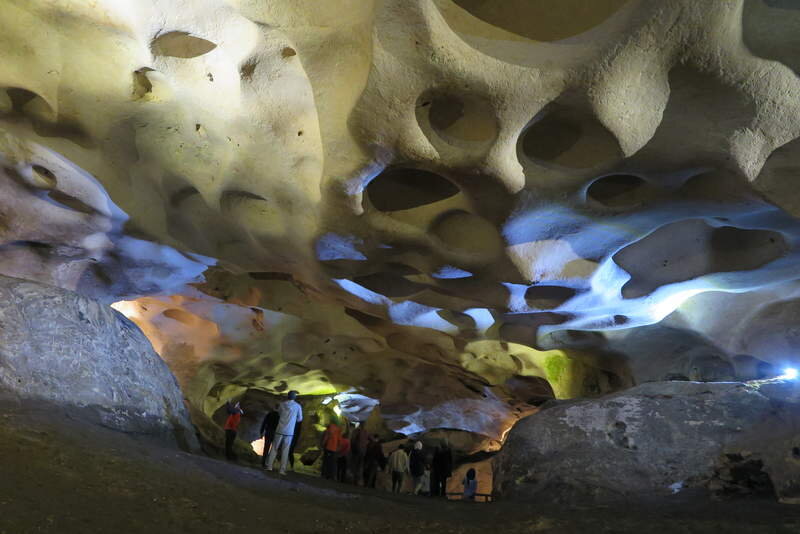TEHRAN – Iran’s western Kordestan province is teemed with hundreds of historical sites, many of which well worth a visit. One of the most famous is the Caves of Karaftu, a series of chambers carved into a cliff facing a mountain. The caves are formed naturally but have been modified by inhabitants over the past centuries.
Today, those elevated lodgings are magnificent because one of which bears a Greek inscription that reads: “This is the House of Hercules. Whoever enters is safe.” It is, however, one of the few examples of such an inscription preserved in-situ in Iran.
Karaftu has been a haven for local people at the time of trouble. Evidence shows that it has been a residence for various peoples before the advent of Islam. The property is also known as Karaftu Castle by the local people.

At the present time, the Caves of Karaftu are a source of tourist attraction. In January 2015, it was reported that the caves were to be inscribed on UNESCO’s World Heritage List. It was also asserted that with this prestigious status, more tourists, especially foreign ones, would visit the site.
The Caves of Karaftu are limestone caves and believed to have been naturally formed several millions of years ago. Studies have shown that the region had been underwater during the Cretaceous period and that the mountains emerged out of the waters during the late part of this geologic period. There is still water in certain parts of the cave, and these areas may be explored using small boats, according to an article resealed by the Ancient Origins in July 2016.
Based on the article, it is not known for certain when the modification of the caves began, but it has been initially suggested that this commenced during the Parthian period, i.e. between the 3rd century BC and the 3rd century CE. This is supported by the discovery of pottery from this period. Pottery from the subsequent Sassanian and Islamic periods indicate that usage of this cave continued during these periods. The Greek inscription from the caves may show that such modifications may have taken place in an earlier period of time.
Apart from the pottery from various points of the caves’ history, the Caves of Karaftu are also known for a Greek inscription that reads “Herakles resides here / Nothing evil may enter”. This inscription is said to have been first discovered in modern times by Sir Robert Ker Porter, who recorded the site and its inscription in 1819. An improved reading of the inscription was obtained by Sir Henry Rawlinson when he visited the caves in 1838. A copy of this reading was given to William Martin Leake, a well-known British topographer and antiquarian, who made several observations.

Firstly, Leake identified Herakles as the protector of the area. Secondly, the two lines may have been verses. Thirdly, the form of characters belonged to the 4th or 3rd century BC. The last of these was clarified about a century later. In the summer of 1936, Sir Aurel Stein, under the advice of W. W. Tarn, explored the Cave of Karaftu for three days. Apart from producing a plan of the chambers, Stein also made a copy of the inscription. This allowed Marcus N. Tod, a lecturer of Greek at Oriel College, Oxford at that time, to confirm that the inscription was from the early Hellenistic period, between the end of the 4th century BC and the beginning of the 3rd century BC.
The Caves of Karaftu are only accessible via a common entrance found on the southern side of the mountain. On this side, the cliff is said to rise almost vertically, and the entrance to the caves is said to be around 9 m (29 ft.) above the ground. In times past, the caves could only be reached by using ladders of ropes. Today, there is a long staircase leading up to the entrance.
TAGS


No comments:
Post a Comment